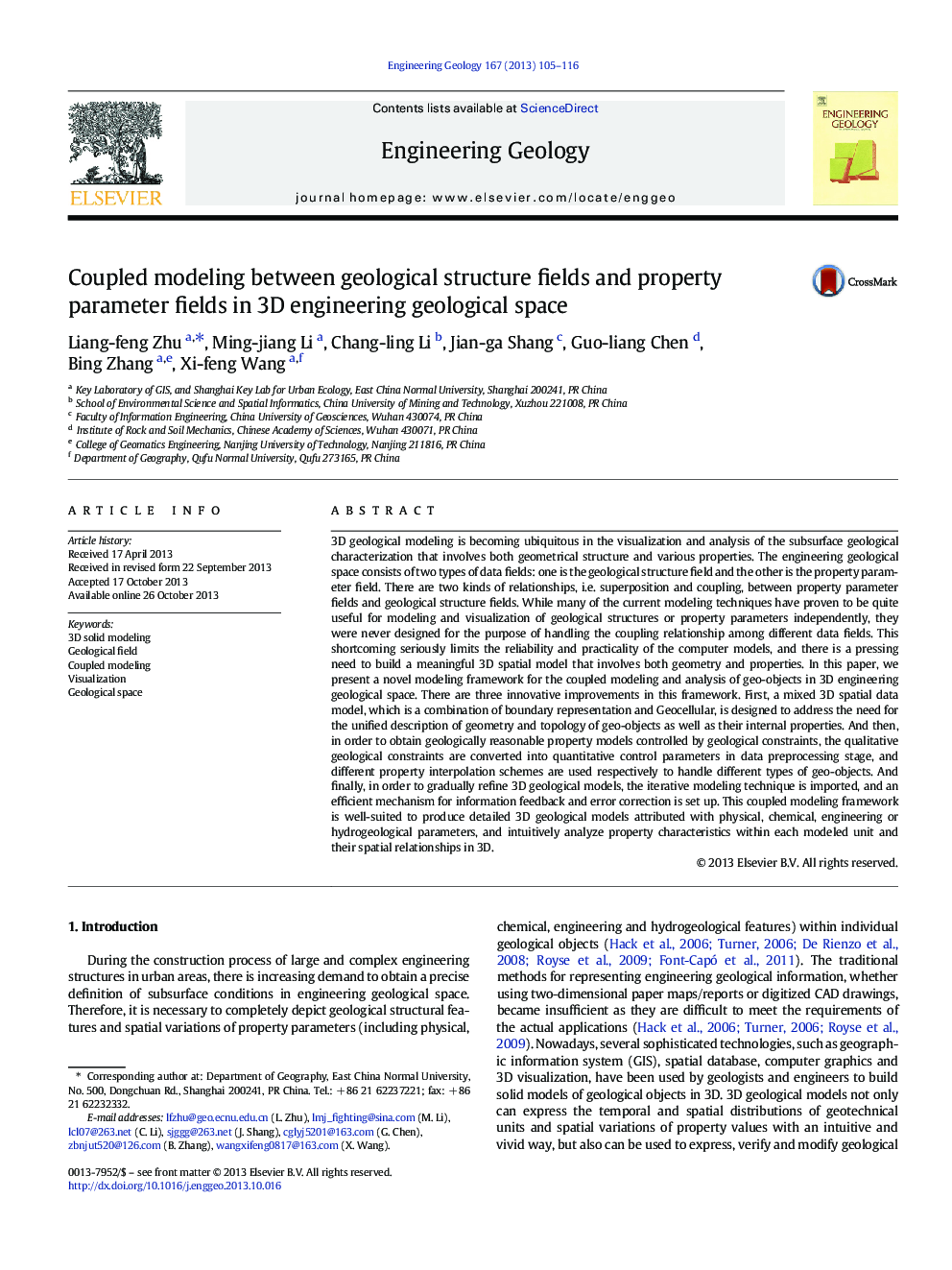| Article ID | Journal | Published Year | Pages | File Type |
|---|---|---|---|---|
| 4743705 | Engineering Geology | 2013 | 12 Pages |
•A new modeling framework for coupled modeling of geo-objects in 3D is designed.•It is suited to build 3D geological models attributed with property data.•A mixed 3D spatial data model combining BRep and Geocellular is designed.•The qualitative geological constraints are converted into quantitative constraints.•An information feedback and error correction mechanism is set up.
3D geological modeling is becoming ubiquitous in the visualization and analysis of the subsurface geological characterization that involves both geometrical structure and various properties. The engineering geological space consists of two types of data fields: one is the geological structure field and the other is the property parameter field. There are two kinds of relationships, i.e. superposition and coupling, between property parameter fields and geological structure fields. While many of the current modeling techniques have proven to be quite useful for modeling and visualization of geological structures or property parameters independently, they were never designed for the purpose of handling the coupling relationship among different data fields. This shortcoming seriously limits the reliability and practicality of the computer models, and there is a pressing need to build a meaningful 3D spatial model that involves both geometry and properties. In this paper, we present a novel modeling framework for the coupled modeling and analysis of geo-objects in 3D engineering geological space. There are three innovative improvements in this framework. First, a mixed 3D spatial data model, which is a combination of boundary representation and Geocellular, is designed to address the need for the unified description of geometry and topology of geo-objects as well as their internal properties. And then, in order to obtain geologically reasonable property models controlled by geological constraints, the qualitative geological constraints are converted into quantitative control parameters in data preprocessing stage, and different property interpolation schemes are used respectively to handle different types of geo-objects. And finally, in order to gradually refine 3D geological models, the iterative modeling technique is imported, and an efficient mechanism for information feedback and error correction is set up. This coupled modeling framework is well-suited to produce detailed 3D geological models attributed with physical, chemical, engineering or hydrogeological parameters, and intuitively analyze property characteristics within each modeled unit and their spatial relationships in 3D.
